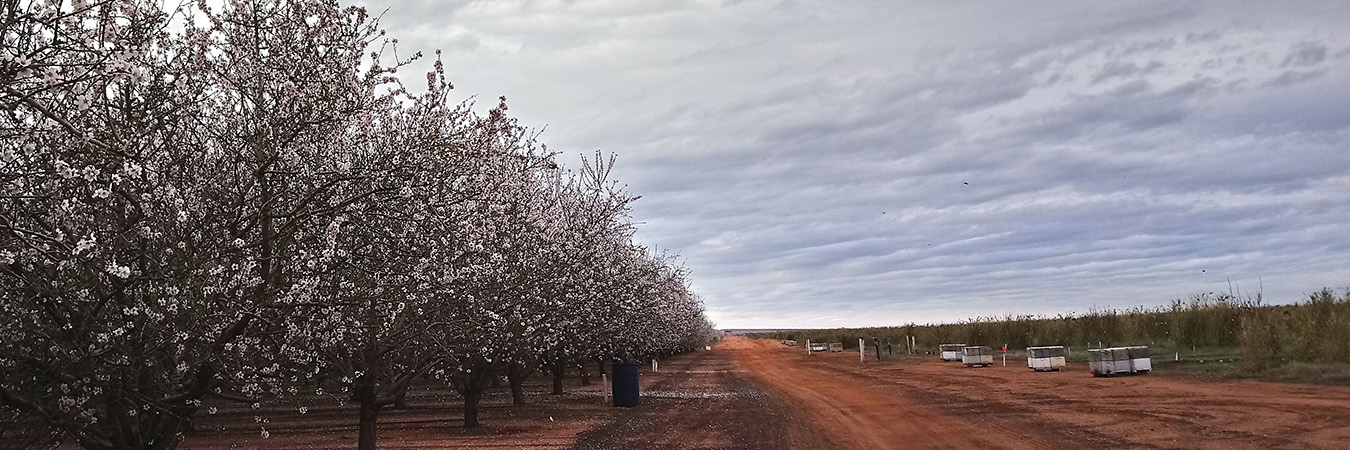Nothing is as Australian as Vegemite on toast, but what if that was all you ate for every meal, every day?
If that doesn’t sound very healthy it’s because it isn’t; we need variety in our diets to make sure we get all the nutrients we need. The same is true for honey bees.
The honey bee diet is comprised of three things: water, nectar and pollen; but it is not as simple as it sounds. Nectar is the major source of energy due to its high carbohydrate content. Pollen is high in proteins and essential amino acids which are crucial for brood development and colony fertility. However, plants vary in quality as the amount of protein, fat, carbohydrate and minerals vary. Therefore, honey bees need to forage on a variety of different plants in order to maintain colony health and maximise their productivity.
This is really important for beekeepers that provide paid pollination services. The majority of pollinator-reliant crops in Australia are farmed in large scale monocultures. This means that managed colonies placed in these orchards to provide pollination services will only be getting their food from a single species of plant. Although monocultures make for more efficient crop management, it conversely raises the risk of colony deterioration due to malnutrition when they are kept in the area over a period of time.
However, those humble unwanted plants, so-called weeds, can enhance colony nutrition because they offer supplementary nutrition in addition to food obtained from the dominant species in the foraging range. The downside of weeds is that they may outgrow and cause negative impacts on the growth of the crop, and it may alter the focus of foraging bees from the target plants.
The answer lies in ensuring that the bees have access to a varied diet without taking them off the focus plant too much. This can be achieved if there are remnant vegetation fragments or forest in the vicinity. Additionally, rotation of managed hives from one crop to another during pollination season can also help to increase variety in honey bee diets. Finally, growers can plant small patches of bee-friendly flowers among their crops, providing the bees with some much needed variety. This will promote brood production and support colony health and better allow the bees to do the important work of pollination.
Video
Benefits of planting flowers for bees, Project Integrated Crop Pollination
Acknowledgements:
- Di Pasquale, G., Salignon, M., Le Conte, Y., Belzunces, L.P., Decourtye, A., Kretzschmar, A., Suchail, S., Brunet, J.-L., & Alaux, C. (2013) Influence of pollen nutrition on honey bee health: Do pollen quality and diversity matter? PLOS ONE, 8, e72016.
- Leech, M. (2012) Bee Friendly: A planting guide for European honeybees and Australian native pollinators. Rural Industries Research and Development Corporation, publication 12/014.
- Simanonok, M.P., Otto, C.R.V., & Smart, M.D. (2019) Do the quality and quantity of honey bee-collected pollen vary across an agricultural land-use gradient? Environmental Entomology, 49, 189-196.
- This article was peer-reviewed by Nadine Chapman and Michael Holmes.


